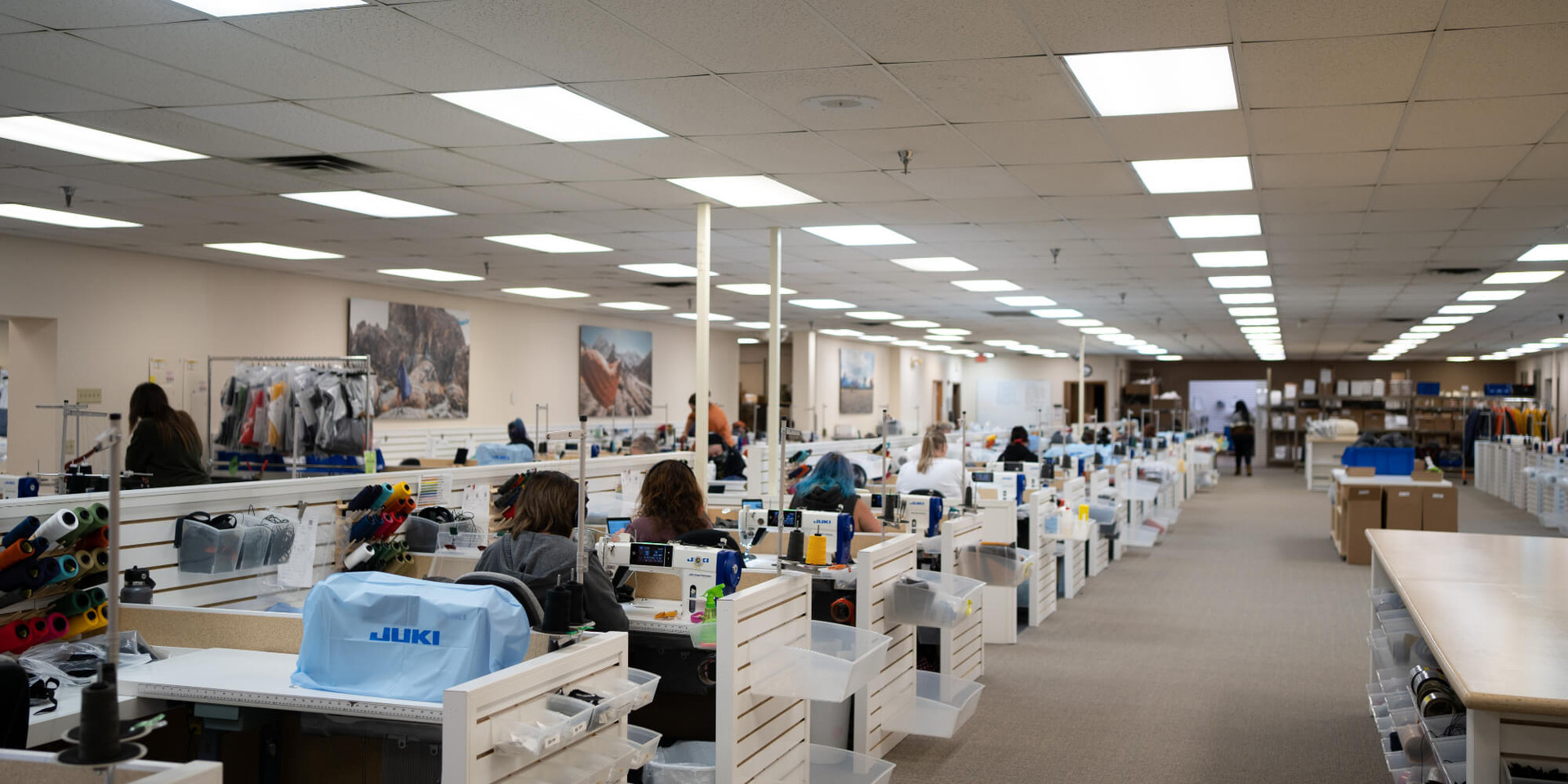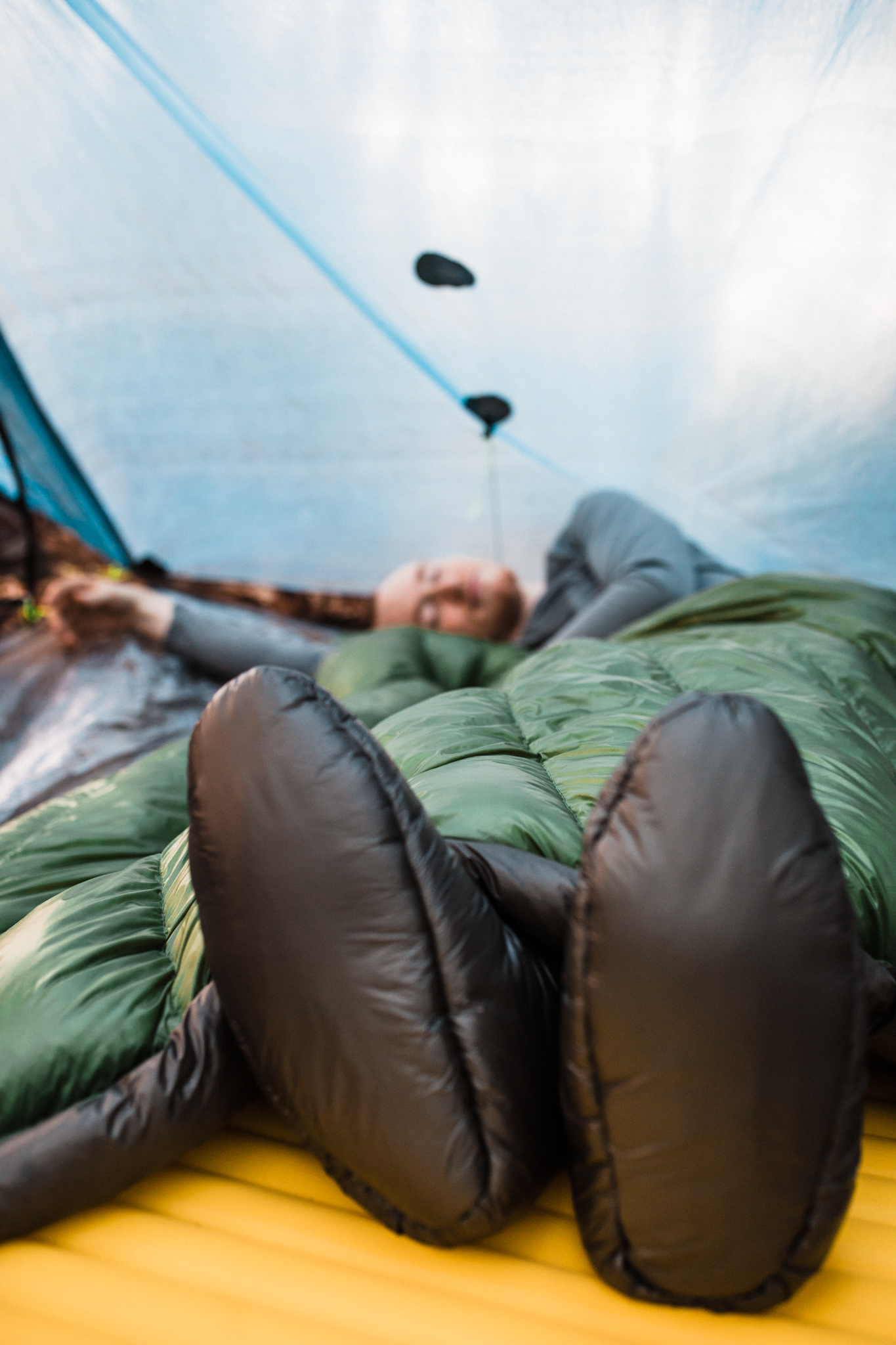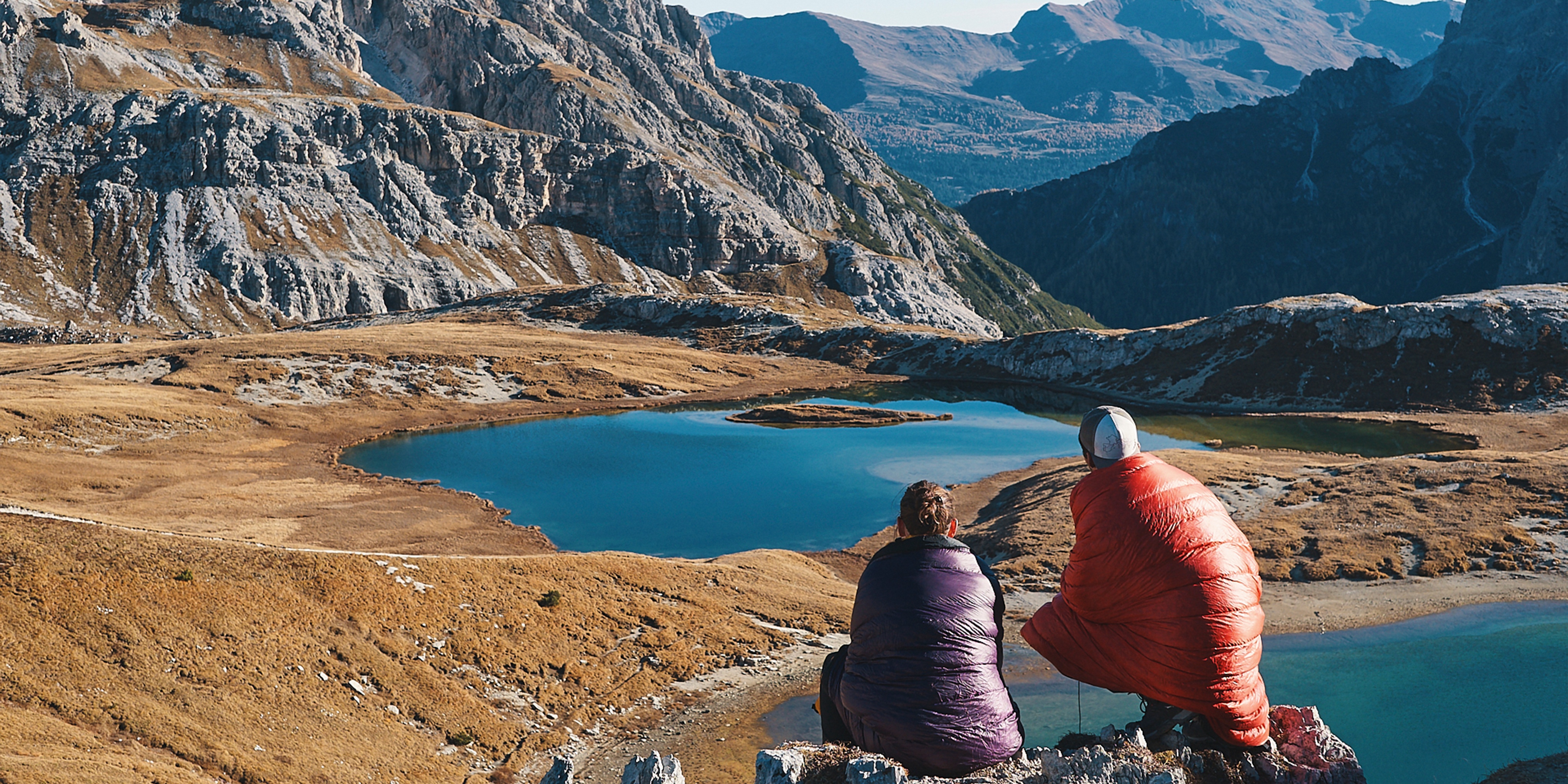Support and FAQ
Making a change in your gear can be stressful and involve a lot of uncertainty in an already uncertain place (the outdoors). Here are some common questions we get and some answers to those questions. This page is split between specific quilt questions and a general section that helps to explain many common UL terms. Many of these questions are also answered in more depth in hyperlinked articles.
Where do I go to get support for my quilt?
This blog page, among others, provides a majority of the necessary after-purchase support for our gear.
You can also reach our support team on our Contact Us page for any specific questions not answered on the blog.
General FAQ's
What all comes with my quilt?
- Each quilt comes with a quilt as ordered, stuff sack, pad straps, and a cotton storage bag. Quilt specs are written on a hang tag, including the weight and order number. Oh, and stickers, we don't want to forget those!
What is a Sleep System?
- A sleep system is all of the components necessary to sleep outside. In short, this includes sleeping pad, quilt or sleeping bag, shelter, and any sleep clothes.
What is Thru Hiking?
- Thru-hiking is a long-distance hike that covers an entire trail or route in one continuous journey. It is a physically and mentally demanding activity that requires determination, endurance, and a love for adventure. Thru-hikers immerse themselves in the natural environment, carrying all they need and embracing a minimalist lifestyle during their epic odyssey. Learn more about popular thru-hikes both inside and outside of the US .
Quilt FAQ's
Why do custom quilts take so much longer before they ship?
How do I pack my Backpacking quilt for a trip?
- Stuff the quilt into a dry sack or compression sack. Place the quilt in the bottom of your backpack.Surround the quilt with other gear to help keep it in place.Use a stuff sack that is the right size for the quilt to help minimize space and weight.
Are EE’s Quilts Durable Enough for my Uses?
- Generally speaking, yes. Our quilts can use such ultralight material because sleep generally experiences much less wear, than say, trail clothes. However, if you are extremely rough on gear to the point of abuse, a 20D outer fabric or less ultralight sleeping quilt might be a better choice.
How do I clean my quilt?
- Before we talk about how to clean a quilt, it’s essential to understand why it’s worth cleaning a quilt. Our sleeping quilts function best and are most comfortable when clean. Obviously, backpacking is anything but a clean pursuit, especially for extended trips like thru-hikes, but excessive dirt can clog insulation and reduce loft (insulative power) and smell bad.
- There are only two methods StuffWellDone typically recommends. A professional CO2 cleaner (we recommend and work with eClean), or hand washing yourself. Cleaning with a professional service like eClean yields the best results by far, but comes at a higher cost than handwashing to avoid using water, heat, or nasty chemicals.
I woke up with condensation on my quilt. What now?
- Condensation is totally natural and nothing to be concerned about. We recommend airing the quilt out at lunch or upon reaching camp that evening to ensure a dry quilt for the following night.
Can I put my head under my quilt at night?
- We strongly recommend against this. The primary reason is condensation from breath will begin to collect in the quilt and degrade its ability to insulate. If keeping your head warm at night is an issue, we recommend a beanie, hooded jacket or torrid hood to provide additional insulation.
Why don't quilts use hoods?
- The absence of a hood helps maintain freedom of movement. Side sleepers can feel restricted with a hood. We recommend our Torrid Hood as an alternative as it moves with the sleeper.
How Long Should I let my Quilt Loft?
- A quick rule of thumb is an hour for every day in solid compression. This means a short time after a day in a backpack or a few days after transit. Long-term compression of a quilt is not recommended, but if necessary, requires significant time to re-loft.
Why does EE overfill their quilts?
- Our quilts come with a standard 30% overfill. We do not any additional overfill beyond this standard as it comes with diminishing returns. We recommend purchasing a warmer quilt if this is a concern.
What is a draft collar?
- A draft collar is an additional horizontal baffle at the top end of a quilt near the neck. The draft collar provides a buffer against drafts (hence the name) when cinching the quilt tightly.
Can you put new down in my quilt?
- This is not a service we offer at StuffWellDone However, there are external vendors who can do this service. We do not recommend this and it will void our warranty.
Why am I cold at night in my new quilt?
- Though this question occasionally comes up, there is no one-size-fits-all answer. There are so many different factors, both external and internal that can lead to an uncomfortable night out. Learn more about these and some troubleshooting here. Here are some of the most common reasons we find that people are cold at night:
- Insufficiently insulated sleeping pad
- Not using their pad straps with their quilt or using pad straps improperly
- Not consuming enough calories vs. calories spent that day
- Damp or clothes
- Sleeping with the quilt/bag over the head (condensation from their breath gets the down wet, reducing insulative performance)
- Improperly sized quilt leading to inefficient insulating
- The quilt is dirty and has lost insulative performance
- Insufficient sleep clothes or head coverage
- Altitude, local geography, wind, humidity, or improper Shelter protection
How are StuffWellDone Quilts Temperature Rated?
- We have subjected our quilts to EN testing; however, it is crucial to note that the ratings on our website and specifications chart may not necessarily represent the EN test outcomes for a particular product. We evaluate our quilt temperature ratings by employing our own testing methods, incorporating customer feedback, and utilizing our design expertise of more than a decade of building quilts.
- Typically, the quilt temperature ratings we claim fall between the Comfort Ratings and the Lower Limit Rating for quilts that have undergone testing using the EN 13537 standard. Our aim is to declare temperature claims that are more conservative than the industry standard, ensuring that our customers feel comfortable in our quilts at the temperatures we specify.
What’s the right quilt for me?
- The Revelation and Enigma are the way to go if you want the lightest and most compressible options. The Revelation is by far the most versatile, able to be fully opened up like a blanket. The Enigma is our lightest, simplest quilt and has a sewn closed 3D footbox. If you need the absolutely lightest option, or you just always have cold feet, the Enigma is the way to go!
- Our Convert and Conundrum quilts are similar to our Revelation and Enigma, but they offer full-length zippers to fully close up like a sleeping bag when needed. The Convert is the same design as the Revelation (with a full zip), while the Conundrum is the same design as the Enigma (with a full zip). Both the Convert and Conundrum are great for colder sleepers, folks not ready to leap full quilts, or those who tend to go on a lot of winter adventures.
How Should I Store My Quilt?
- To store your backpacking quilt, we include a need a large, breathable storage sack. This will allow the down to loft properly and prevent it from getting compressed. When storing your quilt, make sure it is completely dry. If it is wet, it will mold and mildew. You can dry your quilt by hanging it in a well-ventilated area or by using a dryer on the lowest setting.
- Once your quilt is dry, store it in a cool, dark place. Avoid storing it in direct sunlight or near heat sources. This will help to preserve the down and fabric and keep it in good condition.
What Fabric Should I Choose For My Quilt?
Here are some of the fabrics we offer for our quilts:
- 20D Nylon: lightweight, strong, and water-resistant fabric. It is a good choice for backpackers who are looking for a lightweight quilt that is durable and can withstand wet weather and hard usage.
- 10D Nylon: This is a very lightweight fabric that is strong and water-resistant. It is a good choice for backpackers who are looking for a good balance between of different qualities and weight.
- 7D Nylon: This is the lightest fabric that we offer, but it is also more delicate than the other fabrics. It is a good choice for backpackers who are looking for the lightest possible quilt and are willing to sacrifice some durability.
Should I Choose a Down or Synthetic Quilt?
- Down and synthetic quilts are both popular choices for backpacking, but they have different advantages and disadvantages. Down quilts are typically lighter and more compressible than synthetic quilts, making them a good choice for thru-hikers and other backpackers who want to save weight.
- Synthetic quilts are not as light or compressible as down quilts, but they are more water-resistant and retain their loft even when wet. This makes them a good choice for backpackers who are likely to encounter wet weather. Synthetic quilts are also typically less expensive than down quilts.
Quilt Accessories FAQ's
Should I swap out the Stuff Sack with my quilt?
- Depending on personal preference. Our stuff sack is not fully waterproof against immersion, which might make an alternate stuffsack a preferred option.
Do I Need a Sleeping Pad?
- Yes, you need a sleeping pad for your backpacking quilt. A sleeping pad provides insulation from the cold ground, which is essential for staying warm at night. Quilts do not have insulation on the bottom, so they rely on your sleeping pad to keep you warm.
- If you do not use a sleeping pad with your quilt, you will likely get cold at night. The cold ground will conduct heat away from your body, and your quilt will not be able to keep you warm. This can lead to a sleepless night and a miserable hike the next day.
- There are many different types of sleeping pads available, so you can choose one that is right for your needs and budget. You should also consider the weight and pack size of the sleeping pad when making your decision. Sleeping pads can be bulky and heavy, so you want to choose one that is lightweight and easy to pack.
Apparel FAQ's
I’m in between apparel sizes, what do I choose?
- Just in case, size up, or consider ordering a stock version of the item and returning in order to get an exact idea of how things fit.




